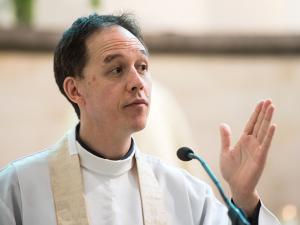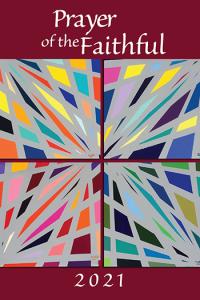Celebrations of Grace: The Sacraments of the Catholic Church, Part 4

In a good liturgical celebration you can pick out easily some moments of special closeness of God and great wealth of graces being shared. But the new liturgy wants to be more for us than a time to get close to God. God is close to us and sharing an abundance of grace all the time, and the liturgy wants to make that fact visible and believable.
We can be caught up and completely absorbed in a special moment of a celebration in church, but the closer we feel God coming to us in the liturgy, especially when the Church’s new liturgy is faithfully and well done, the more connections there are to the world outside the celebration. We have only to open our eyes to see them. Then we’ll find in the liturgy a reminder and a celebration of grace, of those graces that God is giving us all the time wherever we are.
Understanding and misunderstanding the celebration
Compared to the Catholic Mass before the Second Vatican Council, the Church’s renewed liturgy ought to be easy to understand.
- Formerly, the Mass mumbled almost inaudibly to us in Latin, and maybe only one person, the priest understood it in that language. Now we hear the words and partly speak them for ourselves out loud in our own language.
- Before Vatican II the Mass took place on an altar far away from the people and mostly hidden from view. For half of a century the renewed liturgy has been in plain sight and as close as our own voices and hands.
- The former Mass had accumulated extra prayers and even an extra gospel reading at the end that mostly distracted from the main point. Now the Mass is simplified to an introduction, a conclusion, and two main movements, a celebration of the Word and of the Eucharist. One movement leads logically to the other, and both flow smoothly to their own climaxes.
- You would have wanted the former Mass wanted to keep itself safe and unchanging. That meant it had to hide its meaning in an unchanging language. The new rite risks being translated into multiple changing languages and cultures so it can stand up and tell people exactly what it means. “The Lord be with you. … The word of the Lord. … This is my body. … All glory and honor is yours, almighty Father. … This is the Lamb of God who takes away the sins of the world. Happy are we, who are called to his supper. … The body of Christ. … Go in peace to love and serve the Lord.”
Translating the message
It ought to be perfectly clear and easy. Yet what the liturgy now announces, in words and in actions of priest, ministers, and everyone celebrating can take us by surprise. We got used to the idea of receiving the sacraments. Could a sacrament really be our work rather than something the priest gives us? We feel comfortable as private individuals, more or less self-reliant; and habitually we separate religion from the rest of our lives. How strange for the liturgy to tell us that salvation is neither private nor our own accomplishment nor something that happens only in church!
It’s not just what we got used to or what our culture imposes but something simply human in us that mistranslates the message of the liturgy. “Happy are we…” the liturgy proclaims. That means “Happy we should be,” doesn’t it? Or “Happy we are going to be, maybe”? At a Christmas Mass the deacon bowed to me and the others in the pews and filled the air over us with incense. I finally realized what that ceremony meant as the words of a carol went through my head: “Frankincense to offer have I. Incense owns a deity nigh.” The incense wasn’t just giving me some more grace, as I used to think but “owning,” acknowledging, that God was with me already. So that’s why the deacon bowed! Even when the Mass isn’t in Latin, understanding it requires study and reflection and a willingness to believe incredible things.
Think again:
Does the Mass either affirm or challenge your understanding of yourself and the world or your usual ways of acting? What part of the Mass does this for you most?
Image credit: Vaaju via Google Images












